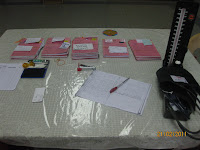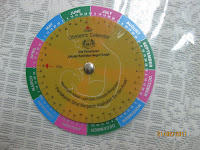Kuala Muda DHO posting
Venue: gym room (UPK department)
Time: 11.30am
Topic: food unit and health education
Held by: PZM En. Wan Nurusabah (nutritionist)
Objectives:
- To ensure implementation of ‘baby friendly hospital initiative’ in health clinics.
- Counseling In terms of overweight, obesity and nutritional education.
- To curb malnutrition in lower socioeconomic living
- To fully understand IDD and its risks in community.
- To promote weight management program under a community scale
Seated in a fully equipped enormous gym, we started the session with greetings, Introductions, light candor and picture taking. En. Wan inquired about the difference between a nutritionist and dietician. Answering that a nutritionist works at more community-based level, with patients being referred from health clinics. The nutritionist collaborates with the public health department. On the contrary a dietician works under an established hospital environment.
PZM En. Wan also briefed us about the counseling session he provides to various clinics in Kuala Muda district. There are basically two types i.e., individual and group discussion. Individual counseling is based upon person preference proves to be a more reliable approach, where as the group counseling consisting of more than 9-10 individuals call for certain demerits.
We continued talking about the different programs held in the district intended to promote healthy living in the community.
Undernourished Children Program
En. Wan being ever so jovial talked about the food basket program and the criterion implemented by MOH to follow
- Growth chart that falls below the normal percentile (yellow zone for 3 consecutive times or into the red zone for at least once)
- Per capita income of RM100 and below
- Congenital problems which may require financial aid.
- Per capita income of RM100 and below
- Congenital problems which may require financial aid.
We conferred that Malnutrition is not only based on socioeconomic factors but may involve aspects such as poor breastfeeding , recurrent infections, lack of nutritional education .Each of these factors is also impacted by political instability and war, lack of sanitation, poor food distribution, economic downturns, erratic health care provision, and by factors at the community/regional level.
A particular Food Basket is worth around RM150, given monthly for a minimum of 6months to a maximum of 6years following review, evaluation and follow-up. The food basket contains different categories food yet balanced and proportionate.
Breast feeding and BFHI Program:
PZM En. Wan discussed
-the importance of breastfeeding, proper techniques and benefits to both mother and child.
-The instigation of (BFHI) baby friendly hospital initiative program certified by WHO and the criteria with which it s rules are implemented
- Understanding the Ten steps outlined by WHO and INICEF in their joint statement in 1989
AIMS OF BFHI and THE TEN STEP POLICY:
- To create conducive conditions in hospitals and thereafter for women who wish to breastfeed
- To empower women to make the right choices in feeding their babies
1. Train all health care staff in skills necessary to implement this policy.
2. Inform all pregnant mothers about the benefits and management of breastfeeding
3. Help mothers to initiate breastfeeding within half-hour of birth
4. Show mothers how to breastfeed and how to maintain lactation even if they should be separated from their infants
5. Have a written breastfeeding policy that is routinely communicated to all health staff.
6. Give newborn infants no food or drinks other than breast milk unless medically indicated.
7. Practice rooming in - allow mothers and infants to remain together 24 hours a day
8. Encourage breast feeding on demand
9. Give no artificial teats or pacifiers to breast feeding infants
10. Foster the establishment of breastfeeding support groups and refer mothers to them on discharge from the hospitals or clinics.
· Salt iodization is by far the most important population-based intervention for IDD control and has been shown to be efficacious in alleviating IDD assuming iodine concentrations in the salt are at appropriate levels at the time of consumption.
· Efforts toward establishing and sustaining national salt iodization program have accelerated and revolutionized over recent years from pipelines distribution to commercial iodinated salt production. This has become a compulsory feature in Sabah and Sarawak.
Weight Management Program
- Counsels about improving lifestyle, nutrition and physical activity
-Helps provide usage of gym facilities
Before we proceeded to end this session En. Wan briefed a little about prevalent conditions related to pregnancy, that the community faces such as, anemia, hypertension etc. and ways to overcome them.












































































